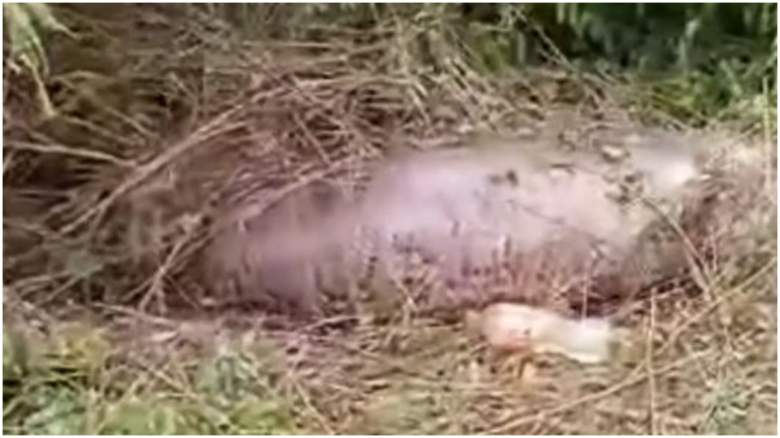
A video has gone viral that shows a python with an exploded stomach after it ate a cow in Thailand.
You can watch the video here and below.
The strange incident occurred in Thailand, according to Newsflare, which called it a “ravenous wild Burmese python,” which was “sprawled in the tall grass.”
Here’s what you need to know:
The Python Was 15 Feet Long
According to Newsflare, the python was 15 feet long. It attacked a 2-year-old cow that was grazing in farmland located in Phitsanulok province, northern Thailand, on August 21.
The cow vanished three days before, and the farmer was looking for it when he found the serpent.
According to the Mirror, Village official Nirun Leewattanakul said: “The python must have been hungry and saw the cow. It then strangled the cow to kill it before swallowing its whole body.”
The Cow Died Inside the Snake

Wikimedia CommonsBurmese python
The village official said the cow died inside the snake, but its stomach then couldn’t handle the bulk, according to Mirror.
“However, after the cow died inside the snake, its body became swollen and stretched the snake’s stomach even more. It was such an scary scene,” Leewattanakul said, Mirror reported.
The snake’s stomach ruptured, killing it.
Thai National Parks explains of Burmese pythons: “The Burmese python (Python bivittatus) is one of the five largest species of snakes in the world (about the fourth-largest as measured either by length or weight). It is native to a large area of Southeast Asia but is found as an invasive species elsewhere. Until 2009, it was considered a subspecies of Python molurus, but now is recognized as belonging to a distinct species.”
That site adds, “They are often found near water, marshy type areas, and are sometimes semiaquatic, but can also be found in trees. Wild individuals average 3.7 m long, but have been known to reach 5.74 m.”
Where are they found? “The Burmese python occurs throughout Southern and Southeast Asia, including eastern India, southeastern Nepal, western Bhutan, southeastern Bangladesh, Myanmar, Thailand, Laos, Cambodia, Vietnam, northern continental Malaysia, and in southern China in Fujian, Jiangxi, Guangdong, Hainan, Guangxi, and Yunnan. It also occurs in Hong Kong, and in Indonesia on Java, southern Sulawesi, Bali, and Sumbawa. It has also been reported on Kinmen.” Burmese pythons have been found in Florida.
What’s the diet? “Like all snakes, the Burmese python is carnivorous. Its diet consists primarily of appropriately sized birds and mammals. The snake uses its sharp, rearward-pointing teeth to seize its prey, then wraps its body around the prey, at the same time contracting its muscles, killing the prey by constriction,” Thai National Parks says.
“It is often found near human habitation due to the presence of rats, mice, and other vermin as a food source. However, its equal affinity for domesticated birds and mammals means it is often treated as a pest. In captivity, its diet consists primarily of commercially available appropriately sized rats, graduating to larger prey such as rabbits and poultry as it grows. Exceptionally large pythons may even require larger food items such as pigs or goats, and are known to have attacked and eaten alligators and adult deer in Florida, where they are an invasive species.”
READ NEXT: The Life & Death of Nashville Bomber Anthony Quinn Warner